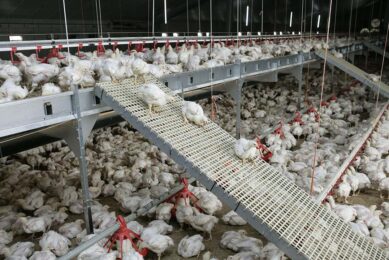Price takes on greater role in poultry purchasing decisions
The impact of the economy and higher prices for meat and poultry products are making a significant difference for consumers at the meat case. Price has taken on an ever-greater role in the meat purchasing decision process, as price per pound has solidified its number-one ranking as the most important decision factor for consumers, while total package cost is now the second most important decision factor, surpassing product appearance, according to the seventh annual Power of Meat study.
The study, conducted by 210 Analytics, was commissioned jointly by the American Meat Institute (AMI) and the Food Marketing Institute (FMI) with generous sponsorship by Sealed Air’s Cryovac Food Packaging Division.
The report, which details the findings of a national online poll of 1,340 consumers conducted in November 2011, was released this week at the 2012 Annual Meat Conference in Orlando, FL.
Top money-saving behaviours
Shoppers who try to save money on groceries typically resort to a variety of money-saving measures both pre-trip and in the store. However, for the first time this year, the share of shoppers simply opting to buy less (and thus spend less) equalled the share using lists, coupons and other saving measures.
In terms of meat and poultry, dollar sales increased by 2.5%, but volume sales decreased by 5.3% as a result of inflation across proteins. Consumer focus on price and value is further underscored by the growing share of shoppers engaging in pre-trip research and planning meals around promotions. However, an even greater share compares prices while in the store. The end result is greater shopper flexibility to adjust purchases to spend less.
Meal purchasing patterns
Full-service supermarkets continue to be a stronghold for fresh meat and poultry, with high retention rates and a pick-up of shoppers from other channels, especially supercenters. The emphasis on in-store purchasing decisions makes clear signage and effective operations all the more important. Price-related promotions are especially effective for steering people to a certain kind of meat or poultry and slightly less effective for the amount purchased.
Private-brand meat and poultry remains popular. However, rather than an outright preference, it is better defined as a greater willingness to purchase private brands. This led to an increase in the share of ‘switchers’ – shoppers who do not have a preference for national or private brand, but choose based on other factors, predominantly price. Meanwhile, shoppers’ reduced interest in volume-based discounts, such as bulk and buy-one-get-one free, as measured last year, did not rebound any this year.
Despite economic pressures, natural and organic meat and poultry experienced an uptick in the number of buyers over the past year to 24 percent of shoppers. Additionally, 90% of shoppers predict they will buy about the same (70%) or more (20%) next year.
Meat’s role on the dinner table
Meat and poultry play an important role at the American dinner table, with chicken and beef making up the largest share of purchases. The fresh category continues to be much larger than the heat-and-eat and ready-to-eat categories, but the latter continue to show signs of strength for the convenience-oriented shopper. Another area of growth is marinated meat and poultry, with an increasing share of shoppers preparing their own mixes or purchasing marinades or spice mixes along with the meat/poultry.
Related website:
American Meat Institute (AMI)
Join 31,000+ subscribers
Subscribe to our newsletter to stay updated about all the need-to-know content in the poultry sector, three times a week. Beheer
Beheer








 WP Admin
WP Admin  Bewerk bericht
Bewerk bericht